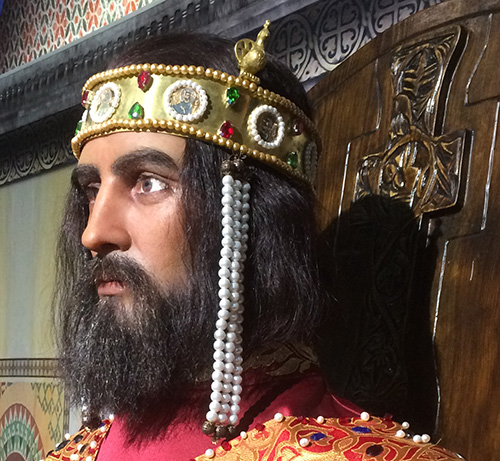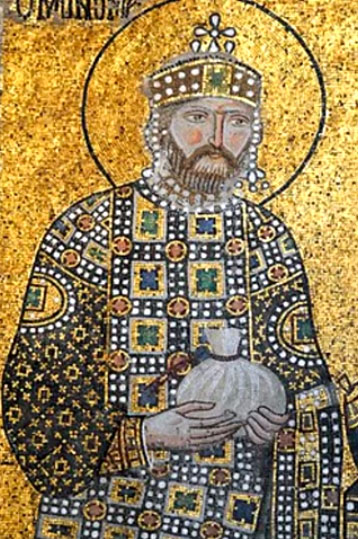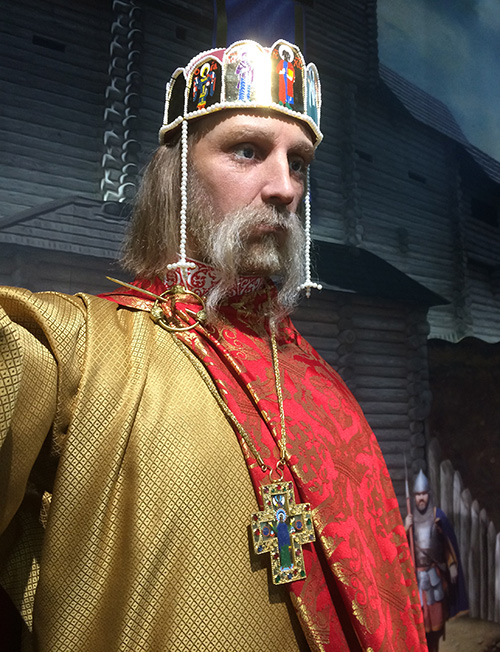 The traditional attire of Byzantine royals was extremely ornate, opulent, and eye-catching. It had to be as this state was huge and powerful. But one particular piece of this outfit demands special attention. We’re talking about the Byzantine crown or diadem – gorgeous headpiece that became trendy among the rulers of the time far outside the Byzantine Empire. Let’s look at this crown a bit closer as we have surviving examples, numerous frescos and depictions on coins and seals, and even some modern replicas of these crowns.
The traditional attire of Byzantine royals was extremely ornate, opulent, and eye-catching. It had to be as this state was huge and powerful. But one particular piece of this outfit demands special attention. We’re talking about the Byzantine crown or diadem – gorgeous headpiece that became trendy among the rulers of the time far outside the Byzantine Empire. Let’s look at this crown a bit closer as we have surviving examples, numerous frescos and depictions on coins and seals, and even some modern replicas of these crowns.
Read also:
Byzantine traditional costume and fashion trends
Byzantine imperial dress. What did Byzantine emperors wear?
Byzantine female attire in detail
One of Byzantine imperial symbols of power and characteristic accessories was the Byzantine crown. It had a specific look that was rather different from crowns used in other countries around the world. The shape was that of a circlet or diadem with so-called “pendilia” or “pendoulia” (temple pendants that dangled from the crown). In many frescos and portraits, we see the rulers depicted in this unique headdress.
There were many designs of Byzantine crowns – blacksmiths and jewelry makers tried to show all their skill by producing artful crowns. These crowns were made from gold and adorned with precious stones, pearls, and such gold elements as figurines, crosses, etc. In most cases, the circlets had crosses and religious icons on them. As we all know, the Byzantine Empire was a Christian country and it managed to spread this religion to its vassals, neighbors, and trading partners. So, we’re not surprised to see these crosses and icons.

Modern replica of Byzantine crown used by Byzantine emperor Constantine VII Porphyrogenitus (905-959). It’s a wax figure exhibited in The Museum of Making of Ukrainian Nation, Kyiv, Ukraine
If to talk about pendilia, they could be made from metal chains or pearls. Some people consider these pearls to symbolize the tears of the Virgin Mary.
In Byzantine Empire, pendilia are first seen on crowns somewhere during the reign of Marcian (450-457) and remain at least till Manuel II Palaiologos (1391-1425).
But Byzantine wasn’t the only state where crowns of this particular shape were used. One of the most famous Byzantine-style crowns that survived to this day is the Holy Crown of Hungary. It was made in Byzantine by the local blacksmiths and presented to one of the Hungarian kings.

The Holy Crown of Hungary, presumably made in Constantinople in the 1070s
Also, similar crowns are depicted on coins, seals, and pictures of Kyivan Rus’ rulers. They wear the same diadems with pendilia.
Here is a depiction of Volodymyr Monomakh (1053-1125), prince of Kyivan Rus’, on a fresco in Constantinople. We can see a Byzantine crown with pearl pendilia on his head.

Here’s a crude modern replica of a crown worn by prince Volodymyr the Great (960/963 – 1015), another ruler of Kyivan Rus’. Of course, it’s made from cheap materials and fake pearls, but it is known that he used a Byzantine-style crown shaped like this one. This is the wax figure exhibited in The Museum of Making of Ukrainian Nation, Kyiv, Ukraine.

There are still discussions held among historians as to whether a Byzantine crown was the symbol of reign and power or just ornate jewelry piece worn by emperors because they could afford it. But in Kyivan Rus, this headgear was used only by the royals and definitely was one of the main symbols of princely power.
Read also:
Byzantine traditional costume and fashion trends


